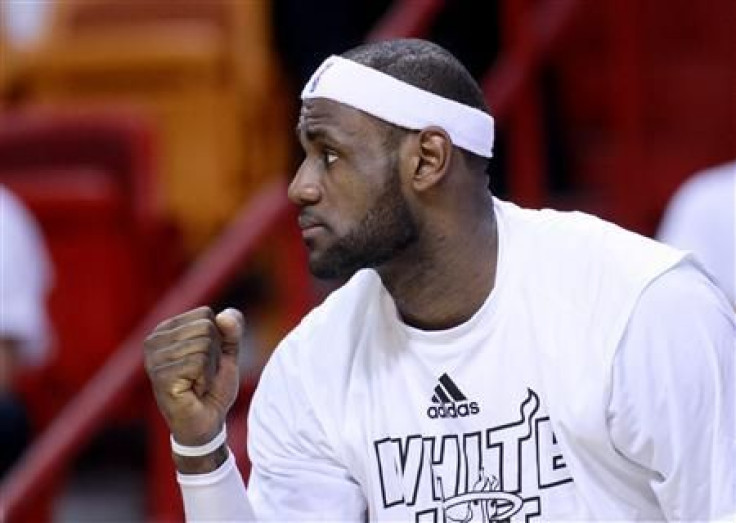2013 NBA Playoff Results Weaken Big-City Bias Argument

Sports cynics have long cited a bias toward big media markets over smaller markets. They argue that the larger the media market, the better the chance a league’s front office and the officiating will maneuver for that market to advance deeper into the postseason and therefore produce more television viewers because non-regular sports viewers of that city will tune in.
Many of those cynics may have been silenced in recent weeks with the current state of the 2013 NBA playoffs.
Examine the results of the major media markets. The Los Angeles Lakers? Swept in the first round by the San Antonio Spurs. What about their Staples Center co-tenants, the Clippers? Bounced after six games by the Memphis Grizzlies.
How did the New York clubs do? Well, the Knicks advanced to the Eastern Conference semi-finals, but were unceremoniously eliminated by the Indiana Pacers in six games. The Nets, in their inaugural season in Brooklyn, didn’t get past the first round, losing to the Chicago Bulls on their home floor of the new Barclays Center in Game Seven. Imagine how the hype machine would have worked with then-Nets’ owner Jay-Z sitting courtside with LeBron James flying up the sidelines.
The Bulls didn’t fare much better after advancing, as they were dropped by the Miami Heat in five games in the subsequent round. Any basketball theorist believing referees were favoring underdogs with some biased whistles to extend the series an extra couple of games had their stance quickly shattered by Chicago’s early exit.
Even the burgeoning Golden State Warriors, who play an exciting brand of basketball in the heavily populated Bay Area of California, fell short to the Spurs after six games in the Western Conference semi-finals.
The last four remaining teams in the playoffs couldn't exactly be described as thriving metropolises. Miami (market size No. 16), Indianapolis (No. 25), San Antonio (No. 37), and Memphis (No. 48) were the conference finalists before the Spurs and Heat advanced to the Finals and meet on Thursday night. With the Spurs and Grizzlies devoid of exciting players, it’s hard to imagine that the league’s front office was ecstatic about the Western Conference finals, and the four-game sweep meant the minimum number of games for a critical series.
The Heat’s series with the Pacers went seven games, and while there was some questionable officiating, few NBA experts anticipated that Indiana, who only boast burgeoning star Paul George, would put up that much of a fight. The series turned out to be less predictable that many expected, and that meant a fortunate uptick in ratings for the league.
Make no mistake, ratings are the name of the game. Conventional wisdom suggests that the more populated the media market, the higher the number of viewers to spark more advertising revenue for the networks. The NBA, as well as The Walt Disney Company (NYSE: DIS), who run networks ABC and ESPN, hope for a ratings bonanza with viewers tuning into the Finals. Advertisers are attracted to the younger TV audience that the NBA generates, and sports are often important for viewers to watch in real time, so there is less recording on DVR and TiVo. Indeed, the NBA receives roughly $930 million a year for all of their broadcast rights for a reason.
The importance of having two highly populated regions in the title series may not be quite as beneficial to rating as some may think. Two large-market teams in the Finals don’t necessarily produce substantially improved ratings, or even a gain at all.
In 2010, the Lakers, in media market No. 2, defeated their long-time rival the Boston Celtics (No. 7) in seven games, and averaged 18.05 million viewers, with roughly a 10 percent ratings bump from Game Four to Game Five, and a ratings surge of 36.2 percent from Game Six to Game Seven.
Compare those numbers with 2011, when the Dallas Mavericks, (No. 5) defeated the Heat in six games, with the ratings averaging 17.3 million viewers. Last year, Miami faced the Oklahoma City Thunder (No. 45) with the series going five games and averaging 18.86 million.
There had been some understandable skepticism that the NBA has leaned towards big-market teams in the past. The most glaring example was Game Six of the 2002 Western Conference finals when the Sacramento Kings appeared to be victimized by unfavorable officiating. The one-sided whistles were so egregious that consumer advocate and former presidential candidate Ralph Nader called for a formal investigation. The Lakers went on to win the series in seven games, despite cries of favoritism.
Skeptics may indeed have a valid argument that professional sports leagues like the NBA favor big cities over small ones, and can cite other examples of the league pushing for certain teams to advance over others. But not this season.
© Copyright IBTimes 2024. All rights reserved.












